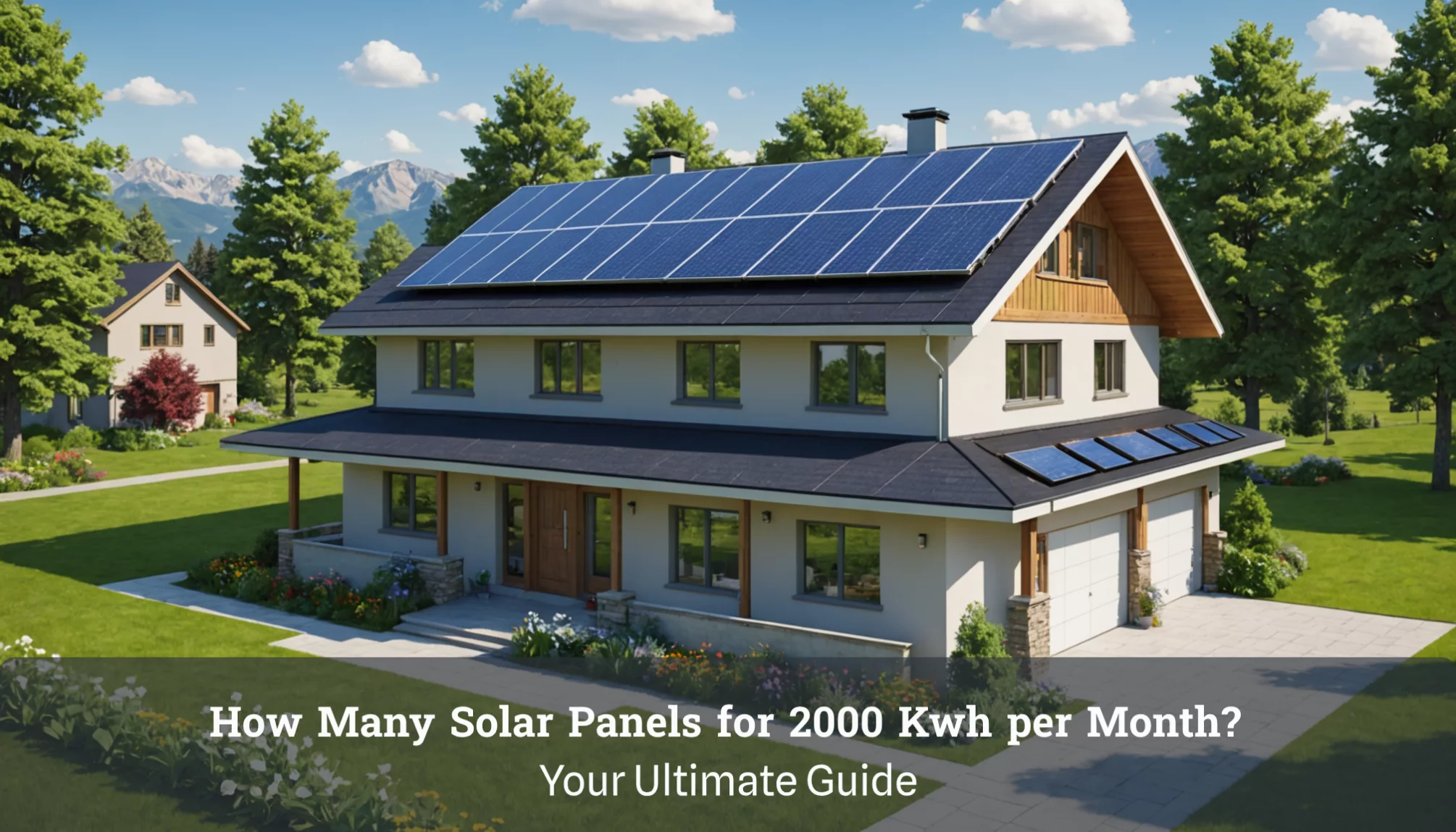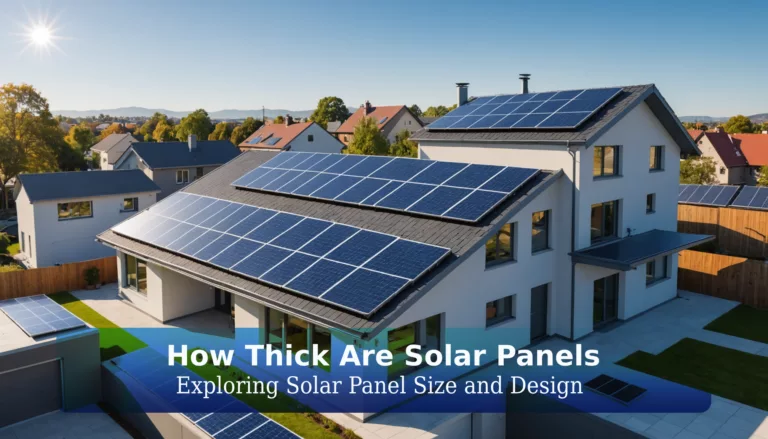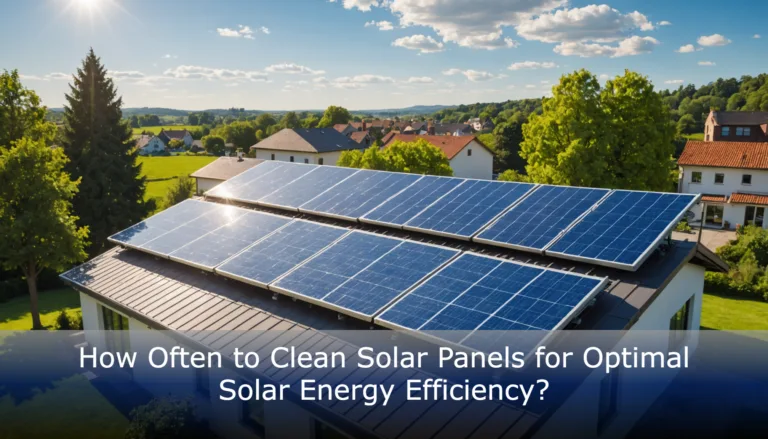How Many Solar Panels for 2000 Kwh per Month? Your Ultimate Guide
Ever wondered how many solar panels you need to power your entire house? If you’re aiming for a monthly energy consumption of 2000 kWh, understanding how many solar panels for 2000 kWh per month is the first step to harnessing the sun’s energy. With solar power becoming a hot topic, especially for eco-conscious DIY enthusiasts, knowing the right number of panels can help you save on electricity bills and reduce your environmental footprint.
In this guide, we’ll uncover key factors like solar panel efficiency, how to calculate the number of panels needed, and tips for optimizing your solar system. Get ready to dive into the sunny world of solar energy and discover how you can transform your home into a powerhouse of renewable energy!
Introduction to Solar Energy for Home Use
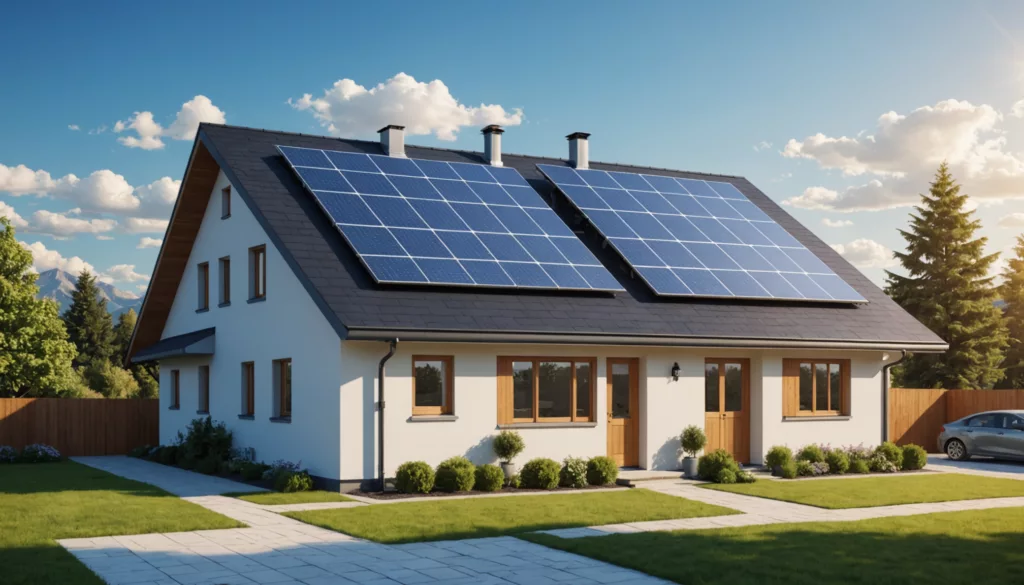
Solar energy is a clean and renewable resource that more homeowners are choosing. It uses sunlight to create electricity, which helps reduce dependence on traditional energy sources. This switch not only benefits the environment but also cuts down electricity bills. With the right knowledge, homeowners can make smart choices about adding solar energy to their homes.
Understanding Solar Panel Efficiency
Solar panel efficiency shows how well a solar panel turns sunlight into electricity. Most residential solar panels have efficiencies between 15% and 20%. For example, a panel with 20% efficiency can produce about 200 kWh per year under ideal conditions if it covers 1 m². This efficiency affects how many solar panels are needed to reach energy goals. In sunny places like central Colorado, a solar panel can generate around 400 kWh annually.
In less sunny areas, like Michigan, it may only produce about 280 kWh per year. Knowing this efficiency is essential for figuring out how many solar panels are needed to generate 2000 kWh per month for a household (Wikipedia).
The Importance of Meeting 2000 kWh Monthly Energy Needs
For many homes, reaching a monthly energy target of 2000 kWh is crucial for daily activities and comfort. This target means needing about 66.67 kWh each day. Understanding energy requirements helps homeowners size their solar systems correctly.
If an average solar panel (300 watts) generates about 1.2 kWh daily under optimal conditions, around 56 panels would be necessary to meet the 2000 kWh monthly goal. This calculation assumes about 5 hours of sunlight each day, which can vary based on location. Knowing energy needs is essential for achieving energy independence and sustainability in the long run.
Overview of Residential Solar Panel Installation
Installing solar panels involves several steps. First, homeowners need to assess their roof space and energy needs. The roof’s orientation and angle can greatly affect energy production. South-facing roofs typically receive more sunlight throughout the day, which enhances energy output. Next, choosing the right type of solar panels is important.
Homeowners can select from monocrystalline, polycrystalline, or thin-film panels based on efficiency and budget. Finally, hiring a certified solar installer is crucial to ensure proper installation and adherence to local regulations. With careful planning and professional help, homeowners can effectively transition to solar energy and maximize their energy utilization.
Calculating Solar Panels Needed for 2000 kWh Per Month
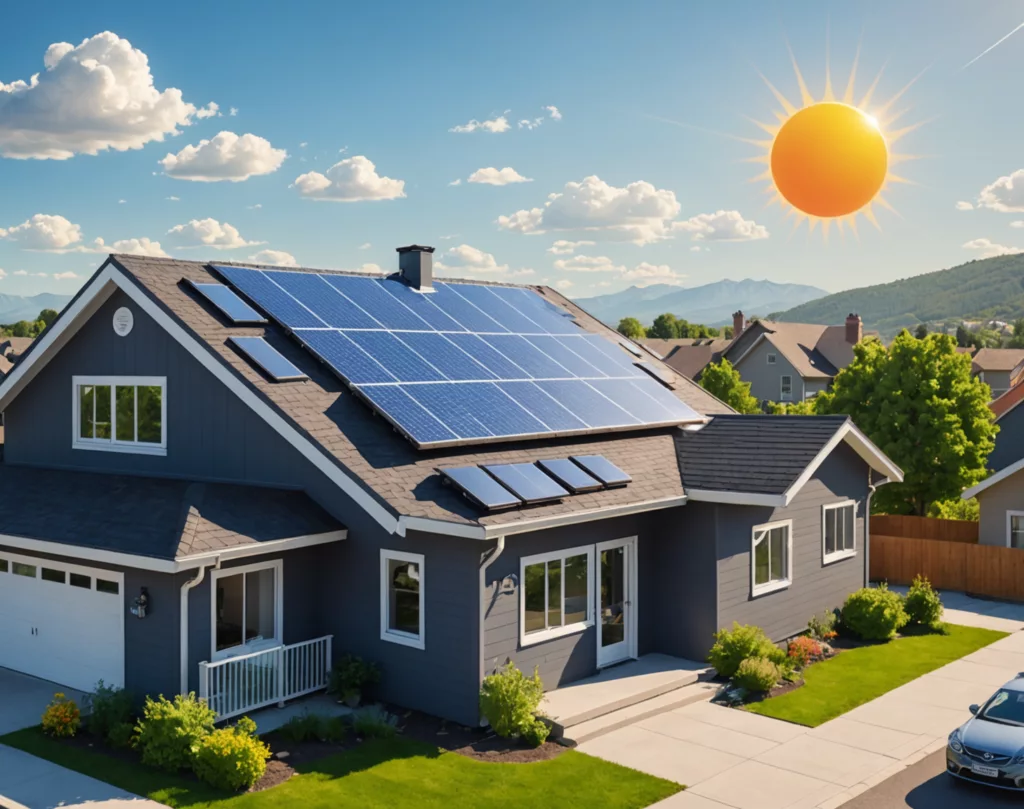
The Formula for Determining the Number of Solar Panels
To find out how many solar panels are needed to generate 2000 kWh per month, use this straightforward formula:
[ \text{Number of Panels} = \frac{\text{Monthly Energy Usage (kWh)}}{\text{Solar Panel Output (kWh per month)}} ]
For example, if a home needs 2000 kWh of energy each month and each solar panel produces about 200 kWh monthly, the calculation is:
[ \text{Number of Panels} = \frac{2000 \text{ kWh}}{200 \text{ kWh/panel}} = 10 \text{ panels} ]
However, real-world conditions vary. Typically, a household may require between 25 and 65 panels. This variation depends on factors like panel efficiency and the sunlight available in a specific area. [Solartap]
Factors Influencing Solar Panel Production
Several key factors affect how much energy a solar panel can produce:
- Panel Efficiency: Different solar panels convert sunlight into electricity at varying rates. More efficient panels produce more energy, so fewer are needed to meet the same energy goal.
- Sunlight Availability: The sunlight a location receives is crucial. Areas with more sunlight generate more energy. Seasonal changes, like shorter days in winter, can also reduce overall energy production.
- Shading and Orientation: Objects that block sunlight, such as trees or buildings, can lower energy output. Solar panels should be installed in areas with minimal shading and typically face south in the Northern Hemisphere to capture the most sunlight.
Considering these factors is essential for accurately determining how many solar panels are necessary to meet energy needs.
Case Study: Real-life Examples of Systems Generating 2000 kWh
A practical example helps clarify these calculations. Some homes with a 14 kW solar system can produce around 2000 kWh of energy monthly. This system usually consists of 36 to 39 solar panels rated at 400W each. Under optimal conditions, these systems effectively meet the 2000 kWh energy requirement.
Observing real-life applications shows that the number of solar panels needed can vary widely based on efficiency and local sunlight conditions. [Go Solar Power]
Types of Solar Panels and Their Efficiency

Monocrystalline vs. Polycrystalline Solar Panels
Solar panels come in two main types: monocrystalline and polycrystalline. Understanding these differences helps in choosing the right option for energy needs.
- Monocrystalline Solar Panels: These panels consist of a single crystal structure. They convert sunlight into electricity efficiently, with an efficiency rating between 15% and 22%. Monocrystalline panels excel in low-light conditions and last longer than other types. However, their manufacturing process can make them more expensive.
- Polycrystalline Solar Panels: Made from multiple crystal structures, polycrystalline panels are generally less efficient, with ratings from 13% to 16%. They are more affordable, making them a popular choice for budget-conscious homeowners. However, they require more space to generate the same amount of energy as monocrystalline panels.
Choosing between these types depends on budget, available space, and energy requirements.
The Role of Solar Panel Quality in Energy Production
The quality of solar panels greatly impacts energy production. Higher quality panels typically come from reputable manufacturers and last longer. They perform better under challenging conditions, such as partial shading or high temperatures.
- Durability: Quality panels use stronger materials, allowing them to withstand harsh weather. This results in fewer replacements and repairs.
- Warranties: Many premium panels offer longer warranties, providing added security for your investment in solar technology.
Investing in high-quality solar panels can lead to increased energy savings over time.
Latest Advances in Solar Panel Technology
Solar panel technology constantly evolves, enhancing efficiency and performance. Some recent innovations include:
- Bifacial Panels: These panels capture sunlight from both sides, boosting energy output. They work particularly well in areas with reflective surfaces, such as snow or water.
- Improved Inverter Technology: New inverter systems optimize energy conversion and improve energy management. Smart inverters can communicate with the grid, balancing supply and demand for better system efficiency.
- Flexible Solar Panels: Lightweight and versatile, these panels can be installed on various surfaces. They are especially useful for unconventional rooftops or mobile setups.
These advancements aim to maximize energy output from solar systems, helping homeowners meet their energy demands efficiently.
Optimizing Your Home Solar System for Maximum Output
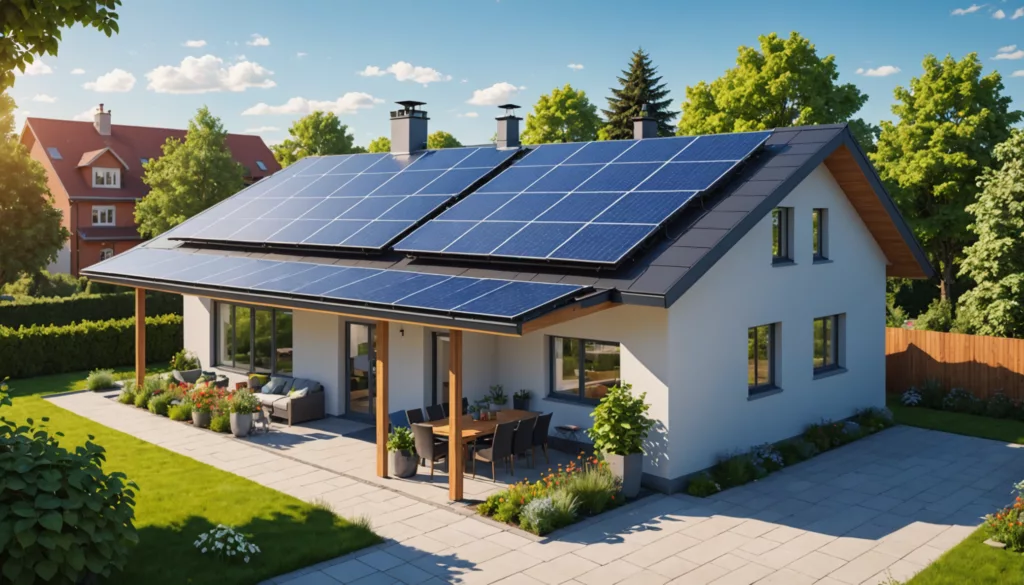
Positioning and Angle: Maximizing Solar Exposure
To achieve the best performance from solar panels, their positioning is essential. To maximize solar energy capture, solar panels should be optimally oriented. In the Northern Hemisphere, they should face true south, while in the Southern Hemisphere, they should face true north. This orientation ensures the panels receive the most sunlight throughout the day. The tilt angle is equally crucial. Panels should be tilted at an angle that matches the latitude of their location. This maximizes sunlight exposure and boosts electricity production.
When planning for installation, consider potential shading from nearby buildings or trees. Even a small amount of shade can significantly reduce solar panel output. Therefore, choosing a location with minimal shade during peak sunlight hours is crucial for enhancing energy production.
For instance, homeowners in Kansas City can benefit from placing panels on a south-facing roof with the correct tilt for optimal results. Utilizing solar trackers can further boost efficiency by allowing panels to follow the sun across the sky.
Maintenance Tips for Sustainable Solar Panel Performance
Regular maintenance is vital for ensuring solar panels operate efficiently. Homeowners should clean their panels periodically to remove dust and debris that can block sunlight. This is especially important in areas prone to dust or pollen accumulation. A simple rinse with water can often suffice.
Additionally, inspecting the system for physical damage or loose connections is essential. Monitoring new shading from growing trees or nearby structures can help maintain optimal power generation.
Routine checks can help identify issues early, ensuring that the solar panels perform at their best. Keeping the panels free from snow in winter or debris after storms can also maximize energy production. By following these maintenance tips, homeowners can ensure their solar systems operate reliably and efficiently, helping to meet monthly energy targets.
Incorporating Solar Batteries for Energy Storage
Integrating solar batteries into a home solar system can greatly enhance energy efficiency. These batteries store excess energy generated during sunny days for use at night or during cloudy periods. This capability allows homeowners to maximize solar energy usage and reduce reliance on energy suppliers.
Various types of solar batteries are available, including lithium-ion and lead-acid batteries. Lithium-ion batteries typically offer a longer lifespan and higher efficiency. When selecting a battery, consider energy usage patterns and storage needs to find the best match.
Adding solar batteries not only optimizes energy utilization but also fosters greater energy independence. Homeowners can access stored energy during peak hours, which can lead to cost savings. This strategy is particularly beneficial for achieving the goal of generating 2000 kWh per month, ensuring consistent access to solar power regardless of weather conditions.
Moving Forward with Your Solar Energy Project

Steps to Take After Calculating Your Solar Panel Needs
After determining the number of solar panels needed to generate 2000 kWh per month, homeowners can take several essential steps to advance their solar project. Effective planning and execution can lead to a successful solar energy installation. Here are the key steps to consider:
- Consult with Solar Energy Professionals
Engaging experts helps customize the solar system to fit specific needs. Professionals evaluate roof conditions, energy usage, and local regulations. They can recommend the best panel types for the area, ensuring the system efficiently meets energy requirements. - Explore Financial Incentives
Many regions offer financial incentives for solar installations, including tax credits, rebates, or grants. Homeowners should research local, state, and federal programs to lower installation costs. These incentives can significantly improve the return on investment, making solar energy more affordable. - Obtain Multiple Quotes
Collecting quotes from various solar installation companies is crucial. Comparing prices, services, and warranties enables homeowners to make informed decisions. Choosing a reputable installer is vital, as installation quality directly impacts system performance. - Plan for Installation Logistics
After selecting a contractor, it’s time to plan for installation. This includes scheduling, preparing the roof, and ensuring compliance with local codes. Homeowners may need to clear the roof and discuss any concerns with the installers ahead of the installation day. - Monitor Installation Progress
During installation, homeowners should maintain communication with the installers. Monitoring progress helps ensure the project stays on schedule and meets planned specifications. This is also an opportunity to ask questions and clarify any concerns.
The Future of Residential Solar Energy
The future of residential solar energy is bright, driven by technological advancements and growing public awareness. Here are some trends and developments shaping this future:
- Improved Solar Panel Efficiency
Ongoing technological improvements are increasing solar panel efficiency. New materials and designs may allow panels to exceed 20% efficiency, enabling homeowners to generate more electricity with fewer panels. This reduction in space requirements makes solar systems suitable for various roof types. - Integration of Smart Technology
Smart home technology is becoming standard in solar energy systems. Homeowners can monitor energy production and consumption using apps and smart meters. This integration allows for better energy management, optimizing usage during peak sunlight hours and lowering costs. - Battery Storage Solutions
Advancements in solar battery technology enable homeowners to store excess energy for later use. This capability enhances energy independence and reduces reliance on the grid. As battery prices decline, more homeowners are likely to consider incorporating storage solutions with their solar systems. - Increased Adoption of Solar Energy
As awareness of climate change and renewable energy grows, more homeowners are adopting solar solutions. This rise in adoption encourages further investment in solar infrastructure and innovation. Communities and governments are likely to continue supporting solar initiatives through incentives and programs. - Potential for Community Solar Projects
Community solar projects provide options for homeowners who cannot install panels on their roofs. These projects allow groups to invest in shared solar arrays, making renewable energy accessible to a wider audience. This trend can help lower energy costs and promote sustainability.
Moving forward with a solar energy project requires careful planning, consultation, and consideration of available incentives. The future of residential solar energy looks promising, with technological advancements and increasing adoption paving the way for a cleaner energy landscape.
References
- Sungold Solar: How Much Energy Do Commercial Solar Panels Produce?
- Wikipedia: Solar Panel
Conclusion
In this guide, we learned how to determine the number of solar panels needed to generate 2000 kWh of energy per month. We discussed the importance of understanding solar panel efficiency and considered factors like geographic location and roof space. Additionally, we explored different types of solar panels and how to optimize your home solar system for maximum output.
As you consider moving forward with your solar energy project, remember that every home is unique. You can take steps to meet your energy requirements while contributing to a more sustainable future. Keep exploring the world of solar energy, and you’ll discover even more ways to make a positive impact!
FAQs
1. How do I determine the exact number of solar panels needed?
To find out how many solar panels are needed for a home, first calculate the total monthly energy usage. For example, if a household uses 2000 kWh per month, the next step is to know the energy output of the solar panels. A typical solar panel produces about 1.71 kWh of energy each day. Use the formula:
[ \text{Number of Panels} = \frac{\text{Monthly Energy Usage (kWh)}}{\text{Panel Output (kWh per month)}} ]
This means approximately 39 panels are needed to meet the energy requirement of 2000 kWh per month. However, the actual number of panels can vary based on panel efficiency and local sunlight exposure (Go Solar Power).
2. What are the common misconceptions about solar energy?
Many myths surround solar energy. Some people believe solar panels do not work when it’s cloudy. In reality, solar panels still capture sunlight and generate electricity even on overcast days. Another misconception is that solar energy systems are too expensive. In fact, many homeowners discover that savings on electricity bills and available incentives make solar energy a cost-effective choice over time. Additionally, some think solar panels need constant, direct sunlight, which is not true, as they can function efficiently in various lighting conditions.
3. How can I maximize my solar panel efficiency?
To maximize solar panel efficiency, homeowners should prioritize high-quality panels with excellent efficiency ratings. Proper installation is crucial, with south-facing positioning (in the northern hemisphere) at an angle optimized for sunlight exposure in the specific location. Regular maintenance, including cleaning and inspections, ensures optimal performance. Integrating energy storage solutions like solar batteries allows homeowners to store excess energy generated during sunny periods for use during peak demand or grid outages, enhancing overall energy utilization and reducing reliance on the grid.

